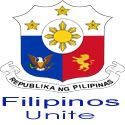History would tell us that the United States and the Philippines have a concocted relationship that goes back a long way under the so-called Spanish –American War. The Philippines had been under the Spanish control for 300 years. After the tumultuous defeat of the Spanish conquestadores, the U. S. forces quickly seized power and in the process, the Filipinos were swept aside and a bloody insurrection ensued resulting to a loss of 250,000 Filipino lives.
Immediately, the U. S. established its colonial relationship and that the Philippines would export raw commodities such as sugar and import manufactured goods. Due to the country’s strategic location along the Pacific coast, the United States built twenty military bases including the Clark Field and Subic Bay.
During the Second World War, the Philippines became an apparent target in similar fashion as the Pearl Harbor in Hawaii. Without question, the war had provided a backdrop for an unintended economic misery in the Philippines.
In 1944, at the height of the war, representatives from 44 countries met at Bretton Woods, New Hampshire, and established two multinational institutions – the International Monetary Fund and the World Bank. The task of the IMF would be to maintain order in the international monetary system and that of the World Bank would be to promote general economic development. Initially, the WB was conceived for the purpose of reconstructing the war-torn economies of Europe by providing low-interest loans. However, the WB was overshadowed in this role by the Marshall Plan wherein the United States would lend money directly to rebuild Europe.
In the 1950s, the Bank turned its attention to begin lending money to the Third World nations. In the 1960s onward, the Philippines became an ardent recipient under the country’s strongman Ferdinand Marcos. In his second term, Marcos secured his presidential power through corrupt and violent election using up the country’s foreign exchange reserves. Without reserves, the Philippine government was engulfed with massive trade deficit and mounting external debt.
With his hands tied, Marcos turned for help to the World Bank. This was without the Bank’s stringent condition of devaluing the peso currency by 60 percent. Currency devaluation was a bitter prescription imposed by the Bank for Third World countries in need of loans. The hope was to bring the trade account into balance through increased foreign exchange earnings from cheaper Philippine goods and a decreased cash outflow for more expensive imports. The unintended consequences, however, wrought havoc to businesses and workers alike. Due to the more expensive imported components for their products, Filipino entrepreneurs were forced into bankruptcy. Unemployment had gone up and wages of urban workers were cut into half.
Without let up, the World Bank whose president is always American, continued to assist Marcos based upon the American fear of domino effect of a bitter struggle between communism and capitalism in the Southeast Asian region. Anecdotal evidences showed that Marcos was emboldened to nurture the insurgency growth in the countryside to create an atmosphere of Communist takeover to ensure more assistance from the World Bank. In the minds of the American policy makers, the Philippines must detour from the Vietnam War failed experience.
It is noteworthy that the World Bank continued to impose conditions for the loans Marcos had sought. One condition is to allow foreign investment in the country through Export Processing Zones (EPZs). The following are the incentives for foreign corporations:
1. Permission for 100 percent foreign ownership
2. Permission to pay a wage lower than Manila’s minimum wage
3. Tax exemptions
4. Low rents for land and low charges for water
5. Government financing of infrastructure and factory building, which could be rented or purchased at a low price
6. Accelerated depreciation of fixed assets
Note that the projects such as in Bataan EPZ alone was worth a whopping $150 million to develop. Indeed, the government spent billions of loaned money on energy, transportation, communications, water, and construction to lure foreign corporations including Texas Instruments, Fairchild, Motorola, and Mattel. While the Philippines was true to its commitment in providing what was in the best interest of these multinationals, the latter were insensitive to the needs of the Filipino workers. The multinationals would pick up and leave when the demand for more realistic wage was raised – and so they did.
In a no-win situation, the Philippines was forced to swallow the pill prescribed by the World Bank of an export –oriented development. This policy proved detrimental to a country whose pressing domestic needs were bypassed by using the borrowed money in support of an export-oriented development. Recall the incentives granted to the multinationals, the country’s labor and raw materials for exports were rapaciously consumed at the expense of the ever growing hungry, unhealthy and ill-educated population. Likewise recall that these multinationals were getting tax holidays and paying low wages to send local governments to near bankruptcy. With about 150 countries competing on this model, each one of them, the Philippines included, could not export its way to solvency.
The Wrath of a Conniving Dictator & The World Bank
Filed under:
centeno,
dictator,
Marcos,
philippine politics,
Philippines,
ron
by:
Ron Centeno
Subscribe to:
Post Comments (Atom)







0 comments: